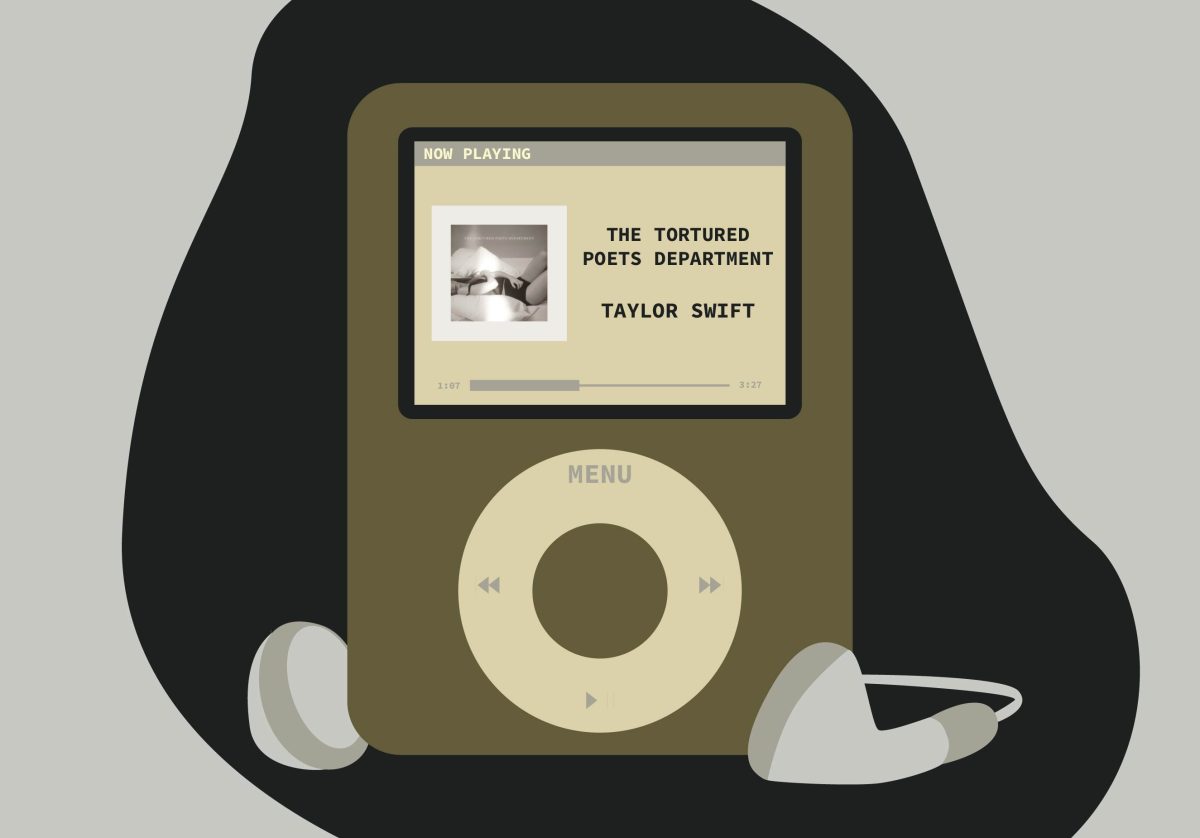We huddled on a concrete bench in the covered part of the Washington Avenue Bridge in search of spirits: just two red-headed reporters sitting cross-legged with a Ouija board.
Our fingertips resting on the planchette, we were eager to unlock the mysteries of campus ghosts.
The plastic indicator started and stopped upon letters. We put the letters in order. We rearranged them. We considered that the ghost might be using creative abbreviations, like a middle-schooler text-messaging her friends.
In the end, they spelled out … nothing.
But we considered it a minor setback, only one part of a larger effort: To unearth University ghost stories – if not the specters themselves.
And the task was harder than we imagined. Archivists, librarians and the Internet initially provided us with little information.
In some ways, the lack of local records made sense. Though it’s been said that most people believe in one supernatural phenomenon, they rarely write down actual experiences. After all, it’s one thing to admit to a friend that you saw a ghost and quite another to see a supernatural story bearing your name preserved in black and white.
Even so, we dug up six tales of the undead that feature our very own campus and students. And we realized that perhaps it’s better for the University community to be left in the dark about its “spirited” past. Too late.
Suicidal specters
To be sure, the two-tiered Washington Avenue Bridge is ugly. But its record as a site of suicides is even uglier.
The best known victim of this fate was University professor John Berryman. Despite winning the Pulitzer Prize for his poetry, Berryman was a troubled man who jumped to his death in 1972. At least seven people have died in a similar fashion since then, including a recently released psychiatric patient and a St. Paul teen who fell trying to spray-paint a girl’s name on the bridge.
So it’s not surprising that people say the bridge is haunted and footsteps sound late at night though the bridge is bare.
Pioneer poltergeist
Sometimes a building is so sinister and old it almost asks to be haunted.
Although the original dark wooden doorframes in Pioneer Hall (its wings were built in 1930 and 1934) and windows have been replaced by more uniform metal models, the residence hall retains some of its old-world “charm.”
Rectangular inlets, deep enough to fit a body, cut into the walls between rooms. Narrow hallways’ corners meet at a series of 90-degree angles, while certain floors are inaccessible from the main lobby.
It feels like a hospital, which is central to its ghost story: Before it was a residence hall, the building was an insane asylum, legend says. Wards from Fairview Hospital, across the street, were locked up inside.
Today, residents say it is haunted by a mentally ill girl who was housed in a room there; they sometimes hear strange noises at night, said senior Bailey Smuhl, a Pioneer Hall community adviser and front-desk worker.
Smuhl said she doesn’t believe the story, though, mostly because it’s been replaced by a new tale. She believes orientation leaders created the legend to terrify first-year students during the first weeks of school.
But she admits the stories have their logic.
“You can see why they’d make up a story like that,” she said. “It’s really creepy here.
“But I guess Pioneer Hall’s ghost story is not as exciting as Sanford. People say it’s haunted by old Mrs. Sanford.”
Feminist phantom?
Maria Sanford was the first female professor hired by the University, in 1880. An advocate of women’s rights, Sanford taught literature, rhetoric, elocution and art history courses. In 1910, a women’s residence hall was named in her honor.
Judging by the statue of her bust, hidden in a side hallway at Sanford Hall, she was a severe-looking woman, the kind of professor you don’t visit during office hours. Either that, or the frightening piece of art is an unflattering representation.
We entered Sanford Hall clandestinely, and though it was nearly midnight when we arrived, the stern-looking security guard paid us no mind.
So we got out the Ouija board. Again.
This time the “mystifying oracle,” as it is known, gave us real clues to the identity of the ghost, or ghosts, who haunt Sanford. Well, sort of.
One time, it dictated the word “gather,” and it almost spelled “politician.” Twice. Cryptic, yes, but Sanford was no simpleton.
The night became morning and our hands grew cold and corpselike. We said goodbye to Sanford.
Northrop’s haunted ‘house’
Legends abound involving places like theaters. After all, if you were destined to inhabit one place for all time, wouldn’t you want some entertainment and an audience?
Northrop Auditorium operations director Sally Dischinger hears scores of stories about ghosts at her workplace.
“The old stage manager (at Northrop) – who was a bit of an alcoholic and basically lived here – haunts the auditorium,” she said. She said he worked at the auditorium from 1929, the year Northrop was completed, until his death in the 1960s.
“I don’t know how he died,” she added. “Probably cirrhosis of the liver or something.”
Dischinger said the ghost supposedly spends his time on the stage and in the balcony. Northrop employee and University student Mike Rosenow said ushers have “seen something” unusual on the fourth floor.
Thankfully, the ghost bears no ill will toward theatergoers seeing plays or concertgoers eager to hear Jason Mraz or Bruce Springsteen.
“I guess he’s just making sure everything is going OK,” she said. “I just wish he would close the door after the Marching Band (practices).”
The Guthrie ghoul
Richard Miller attended the University in 1967 and lived in Territorial Hall. He ushered part time at the Guthrie, where he took pride in wearing his red uniform.
But Miller was an awkward, withdrawn boy who failed classes and had little social life. Sources cite a skiing accident as a particularly traumatic time for Miller.
On Feb. 15, 1967, Miller quit his ushering job and drove to the Lake Street Sears, where he purchased a gun. He then shot himself in the head. His body was found days later in his car. Miller’s suicide note requested he be buried in his usher uniform, books say.
Over the years, Miller’s ghost has put in extra shifts ushering aisle 18. Programs rustle and sometimes he paces back and forth, blocking patrons’ views.
Mary Rose Ciatti, who had various positions at the Guthrie from 1971 to 1979, said she recalls hearing reports that the “ghost light,” the small light that is always on in the house, blinked on and off. People often felt a chill in aisle 18 and saw a mysterious figure moving on stage or in the balcony.
According to “Ghost Stories of Minnesota” by Gina Teel, a presence named “DIK MILLER” revealed itself on a Ouija board to several fellow ushers several years after Miller’s suicide. Teel’s account says that in 1993, an Anishinabe elder performed a “spiritual cleansing.”
Off-campus occult
Houses in Dinkytown and Marcy Park neighborhoods once held families before the homes were rented to college students or split into apartments. People lived – and died – in these cavernous old houses.
University alumnus Dave Safar lived in a white house near the corner of Fifth Avenue and Sixth Street when he was a student and knows firsthand that every house here has a story.
One day, Safar was coming home from a trip to the grocery store, bags in hand. Two old women, dressed all in white, approached him as he neared the walkway to his house.
“They said hi, and I said hi,” he said. “Then one of the women said she’d once lived in the house with her sister, who was no longer living. My room was even in the same part of the house where hers had been,” he said.
The women mentioned a man’s name, and asked if he still lived here, Safar said. He replied that the man lived across the hall from him. They told Safar to say hello to him.
Safar turned to enter the house with his groceries. When he glanced back not a second later, the women had vanished.
“These were old women,” he said. “There was no way they could have run away in that amount of time.”
Safar said he had always found the man they’d asked about frightening and eccentric.
“He was the creepiest guy I’d ever met,” he said. “You know, the kind of guy who flinches when you shake hands with him – a misanthrope.”
The man had a strange closet in the hallway, and he’d “go in there and do stuff,” Safar said.
Safar remembers faucets turning all the way on when no one had been in the bathroom, strange sound dynamics in the hallway and a mysterious figure sitting on the front porch. When Safar went to see who the man was, he was gone, he said.
“I didn’t believe in ghosts until I lived there,” he said. “But sometimes you can just tell when something’s wrong.”
















